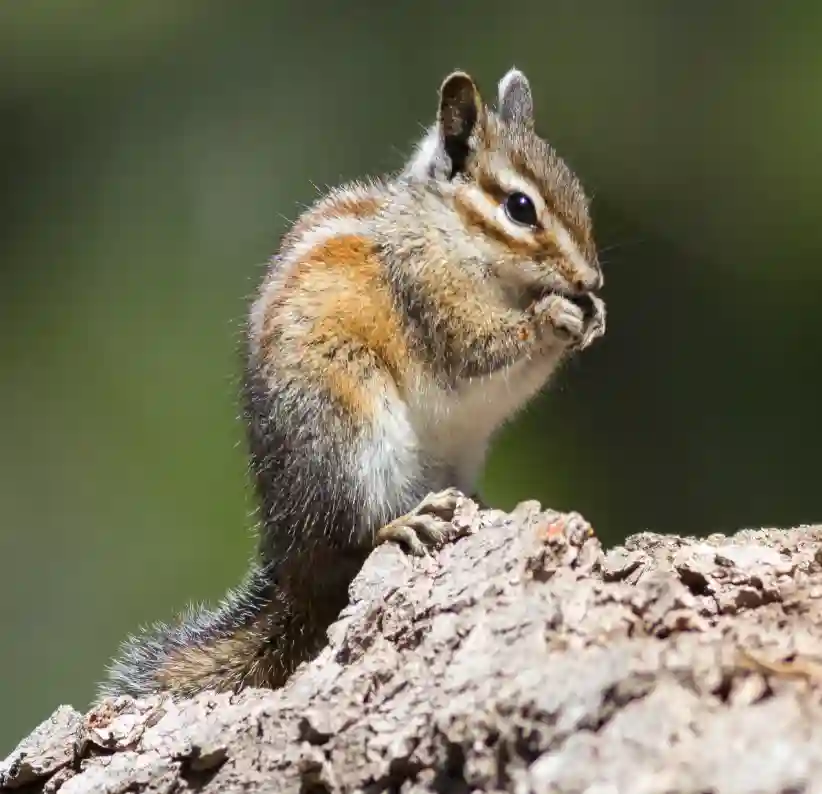Chipmunks vs. Ground Squirrels! [Pictures and Chart]
You probably have heard a lot that squirrels, ground squirrels, chipmunks, groundhogs- all are the same or “all rodents are the same!” Trust us when we say RODENT, we are talking about nearly 2000 species!
And chipmunks and ground squirrels are very common among them. Some might confuse them but for you, we have come up with a list of differences on chipmunks vs. ground squirrels. Let’s not beat around the bush anymore!
Chipmunks vs. Ground Squirrels Pictures
Here are some pictures of both of these mammals. Take a look. To be clearer, take a look at the chart listed below and match it with the pictures- it will surely make it easy for you!
ChipmunksPictures



Ground SquirrelsPictures



Chipmunks vs. Ground Squirrels Chart
Here’s a chart to point out the key differences.
| Attributes | Chipmunks | Ground Squirrels |
| Stripes | 7 (No Head Stripe) | 13 (Head Stripes) |
| Ear | Medium Ears | Short Ears |
| Tail | Fuzzy, Bushy, and Short Tail Held High | Long Tail Kept Low on the Ground |
| Food Habit | Omnivores | Omnivores |
| Winter Protection | Stores Food in the Burrow | Hibernate |
| Climbing Ability | Can Climb (doesn’t climb often) | Are Not Seen Climbing |
| Social Ability | Live Alone in the Burrows | Lives in Burrows but the Burrows are Connected to Other Ground Squirrels |
| Lifespan | 6 Years or More | 12 Years or More |
Difference between Ground Squirrels and Chipmunks
The Habitation
First of all, we will learn about where you can find chipmunks and where ground squirrels. Both of them are rodents and from the same family. So, you can expect a lot of similarities among their habitation. But still, there are differences.
In the case of the ground squirrels, they are grassland creatures. These are the natives of the prairies of the central US. However, agriculture and urban development are adapted by them too. So, you can find them there too.
We have talked about the ground squirrels, but where do chipmunks nest? Conversely, chipmunks love bushes and forests. They live in deciduous forests mostly. You can find them in most of the scrublands.
But you can also see them making their favorite burrows in any urban or suburban land. But in this case, they ensure that they are getting an abundant cover to protect themselves. For them, safety is the first concern.
Differences in Appearance
Not only the habitation but the appearance of these rodents can do you a favor! Yes, there are some key points in their appearance that make them different. Skim through these!
· The Ears
Well, well, well, understanding the color from behind the bushes can be tough. In this case, the easy way to find out if it’s a ground squirrel or a chipmunk is to check out its ear.
They look quite similar but the ears will help you out! The ground squirrels have got short ears. And their ears don’t stick out above the head much.
Take a look at any thirteen-lined ground squirrel and you will know what we are talking about! On the other hand, if it’s a chipmunk, the ears will be rounded. Also, keep in mind that they have erect ears.
· The Body Color
Now that we have explained the ears, it will be simpler for you to differentiate between these two rodents. But if you want to be surer about your identification, you can take a look at the body color of the mammal.
If you are looking at a chipmunk or ground squirrel from a close position, it’s easy to identify their body color. In the case of the ground squirrels or the thirteen-lined ground squirrel- the name is enough!
They have thirteen lines or stripes on their body! If you take a close look at their body, you will see six lighter stripes. These are separated by seven more stripes but in a darker shade. The stripes here look like dots or dahs marks.
The stripes on the body of these animals extend through the body and onto the top part of their heads. Let’s discuss the body color of the chipmunks. Do they have stripes on their body just like the ground squirrels? Oh, yes, they do have stripes- but not the same as the ground squirrels.
The total number of stripes on the body of a chipmunk will be seven. This is the save of the eastern chipmunk or more specifically Tamias striatus. Among these seven stripes on them, only one black stripe will run down the center of the back part of its body.
This stripe will be the middle one. Keeping the one from the middle out of the count, there will be three stripes on each side of the chipmunk. These stripes will go black, white, and black.
Unlike the ground squirrels, the stripes on the body of the chipmunks do not extend to the top part of their heads- that’s the difference!
· The Tails
The ears and the body color aren’t the only things that differ a chipmunk from a ground squirrel. Their tails tell a lot about their identity too! If you look at a thirteen-lined ground squirrel, you will see that they have a long tail.
So, it tells you that the tails of a chipmunk are shorter. For the thirteen-lined one, their tails are streamlined. Another fact that you should notice is that they keep their tails low to the ground when it moves along.
On the contrary, the tails of the chipmunks are fuzzy. They are bushier than the ones of the ground squirrels. Right when you try to catch them or they feel a predator, they run. While running, if you see that the tails of the rodent are held high- it is surely a chipmunk!
You get that there’s a chipmunk in your house, right? Don’t wait, go and learn how to lure a chipmunk out of hiding in your house as soon as you can!
Ability to Climb
We discussed a lot about the differences between these two types of rodents. But what about their climbing capability! If you see a similar rodent climbing trees, most possibly, it is a chipmunk. Yes, we know you think that all squirrels can climb.
But mostly, the squirrels we see climbing trees are tree squirrels. And on that note, we tell you that thirteen-lined ground squirrels are not capable of climbing trees. But, you can see them doing it if they are in a lot of trouble.
On the other hand, as we have told you already, chipmunks are great climbers when it comes to trees. But they decide not to climb more often. Funny thing- in rare cases, you can also see them scaling some building! Incredible!
Hibernation
So, all rodents hibernate, right? Oh, Jeez, no! Not all rodents hibernate! When it comes to the food habit of the chipmunks and ground squirrels, the common thing between them is they both are omnivores.
They love seeds and plants, nuts and berries and at times, they eat small animals and insects too. But when it comes to winter, the chipmunk will store food for feeding themselves. To clear it out, chipmunks don’t go to hibernation.
On the other hand, ground squirrels go to hibernation and they don’t wake up during that period. As a result, they don’t store food, and instead, they eat more right before the winter. In some cases, they eat so much that their weight gets double!
And ground squirrels go to their hibernation period in winter with adding a lot of bodyweight just to survive the winter. As chipmunks don’t hibernate, they need to work hard for storing food.
They carry all of their nuts and seeds to their burrows and keep them there so that they can feel themselves in the winter. As they cannot get the necessary food in winter, the food stored in the burrow helps them survive.
Lifespan
Another thing to note is the lifespan of the chipmunks and ground squirrels. The first one only lives a life close to 6 years. However, ground squirrels live double periods than this.
They live about 12 years or close because they are capable to hide and shelter themselves more than chipmunks. As a result, predators can’t find them often.
Wrap Up
Apparently, when you look at any of these rodents, it isn’t easy to understand the basic differences because they are look alike. However, if you are careful, you can find out the differences we have mentioned.
There are a lot of other detailed variances too. But for you, if you just want to know which one is ruining your garden, learning these differences is enough to find it out!




